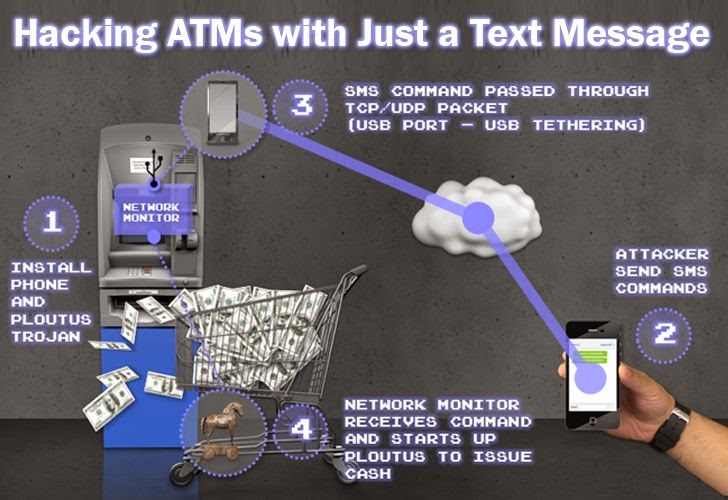
Custom Search
CASH! CASH! HACKING ATM MACHINES WITH JUST A TEXT MESSAGE
Mohit Kumar
Maerch 31, 2014
As we reported earlier, Microsoft will stop supporting the Windows XP operating system after 8th April, apparently 95% of the world’s 3 million ATM machines are run on it. Microsoft's decision to withdraw support for Windows XP poses critical security threat to the economic infrastructure worldwide.
MORE REASONS TO UPGRADE
Security researchers at Antivirus firm Symantec claimed that hackers can exploit a weakness in Windows XP based ATMs, that allow them to withdraw cash simply by sending an SMS to compromised ATMs.
"What was interesting about this variant of Ploutus was that it allowed cybercriminals to simply send an SMS to the compromised ATM, then walk up and collect the dispensed cash. It may seem incredible, but this technique is being used in a number of places across the world at this time." researchers said.
HARDWIRED Malware for ATMs
According to researchers - In 2013, they detected a malware named Backdoor.Ploutus, installed on ATMs in Mexico, which is designed to rob a certain type of standalone ATM with just the text messages.
To install the malware into ATMs machines, hacker must connect the ATM to a mobile phone via USB tethering and then to initiate a shared Internet connection, which then can be used to send specific SMS commands to the phone attached or hardwired inside the ATM.
"Since the phone is connected to the ATM through the USB port, the phone also draws power from the connection, which charges the phone battery. As a result, the phone will remain powered up indefinitely."
HOW-TO HACK ATMs
- Connect a mobile phone to the machine with a USB cable and install Ploutus Malware.
-
The attacker sends two SMS messages to the mobile phone inside the ATM.
- SMS 1 contains a valid activation ID to activate the malware
- SMS 2 contains a valid dispense command to get the money out
- Mobile attached inside the ATM detects valid incoming SMS messages and forwards them to the ATM as a TCP or UDP packet.
- Network packet monitor (NPM) module coded in the malware receives the TCP/UDP packet and if it contains a valid command, it will execute Ploutus
- Amount for Cash withdrawal is pre-configured inside the malware
- Finally, the hacker can collect cash from the hacked ATM machine.
Researchers have detected few more advanced variants of this malware, some attempts to steal customer card and PIN data, while others attempt man-in-the-middle attacks.
This malware is now spreading to other countries, so you are recommended to pay extra attention and remain cautious while using an ATM.

